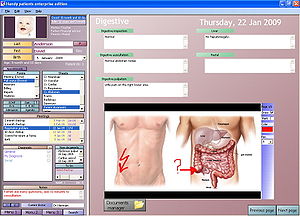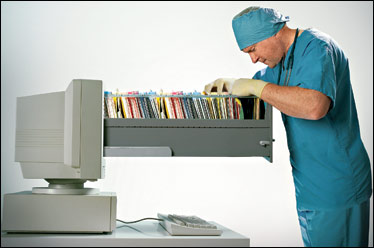
Fresh from his apartment on the beach, Peter feared that the excesses of the holiday will take a toll, he took blood and measure his heart rate. On the other side of the screen, his doctor confirmed the results in real time, do not worry, you have been good holiday: everything is correct, his doctor said to him.
It could be 2020, but it does not matter. This fact will be then, or if not before, something as normal as it is today see the e-mail or browse Twitter.
Today the health of the future is built through communication and information tecnologies.
EHealth, e-health or eHealth, call it whatever you want, is now a reality that is constructed collectively, which involves the medical professionals (doctors, nurses, administrators, etc..), some regions and various ministries. The electronic medical records, digital prescription, online medical appointment and Intercentro telematics and telemedicine are on the rise.
Cases studies
Hospital de Denia (Alicante) has become the first Spanish hospital and the second in Europe to reach the level 7 of HIMSS (Society of Management Information Systems in Health), the highest certification in the implementation of electronic medical records and certifying that is one hundred percent digital. Ángel Giménez, director of Marine Health, a company that manages the Department of Health of Denia, said that “the important role played by professionals to achieve this level of technology. They are who have worked every day modeling this powerful tool, which allows us to enjoy one of the best electronic health records in Europe, and its main benefits achieve directly to the quality of care and patient safety. “
Another recent case is the Provincial Hospital of Castellón, which has already implemented electronic medical records, which will mean improved patient care through a complete integration of healthcare data. “This new tool allows professionals to quickly and safely check the history of their patients and streamlining procedures for next appointments, interconsultations and test management,” said the director, Nicholas Martinez.
The tradicional clinic history
Problems such as space and the huge amounts of paper generated to document the history of all patients is an old procedure.

The Hospital of Castellón has about 192.300 stories that are in 600 meteres of area, representing more that 400 tons of paper. The new digital clinical history solves these problems.
The digital medical history is still a technological challenge for public and private hospitals. The electronic medical history incorporateS Information Technology and Communication (ICT) in health activity.
The story ceases to be a record of information generated in the relationship between a patient and a professional or a health center, to be part of an integrated clinical information (SIIC). The electronic medical record becomes so unified registry and personal media, which is filLed in electronic format all information about patients and their care. It is accessible, with appropriate limitations, in all cases in which clinical care is needed (emergency, primary care, specialty, hospital admissions, etc.).
All the multimedia information that is used must be integrated in clinical practice. To store this information and make it accessible to potential uses with guarantees (consent, confidentiality, security and other requirements), and receive it and reuse it in the most convenient way is a process still in power.
Using HL7 standard for EHR computer
While the Hospital Information Systems (HIS) or Clinical Information Systems (CIS) do not use standards that facilitate the electronic exchange of data, it is not possible that information is available at the point of care where the patient regardless of where the patient is treated.
It is necessary that information systems implement internationally recognized IT standards, to ensure the integrity and legibility of information.
